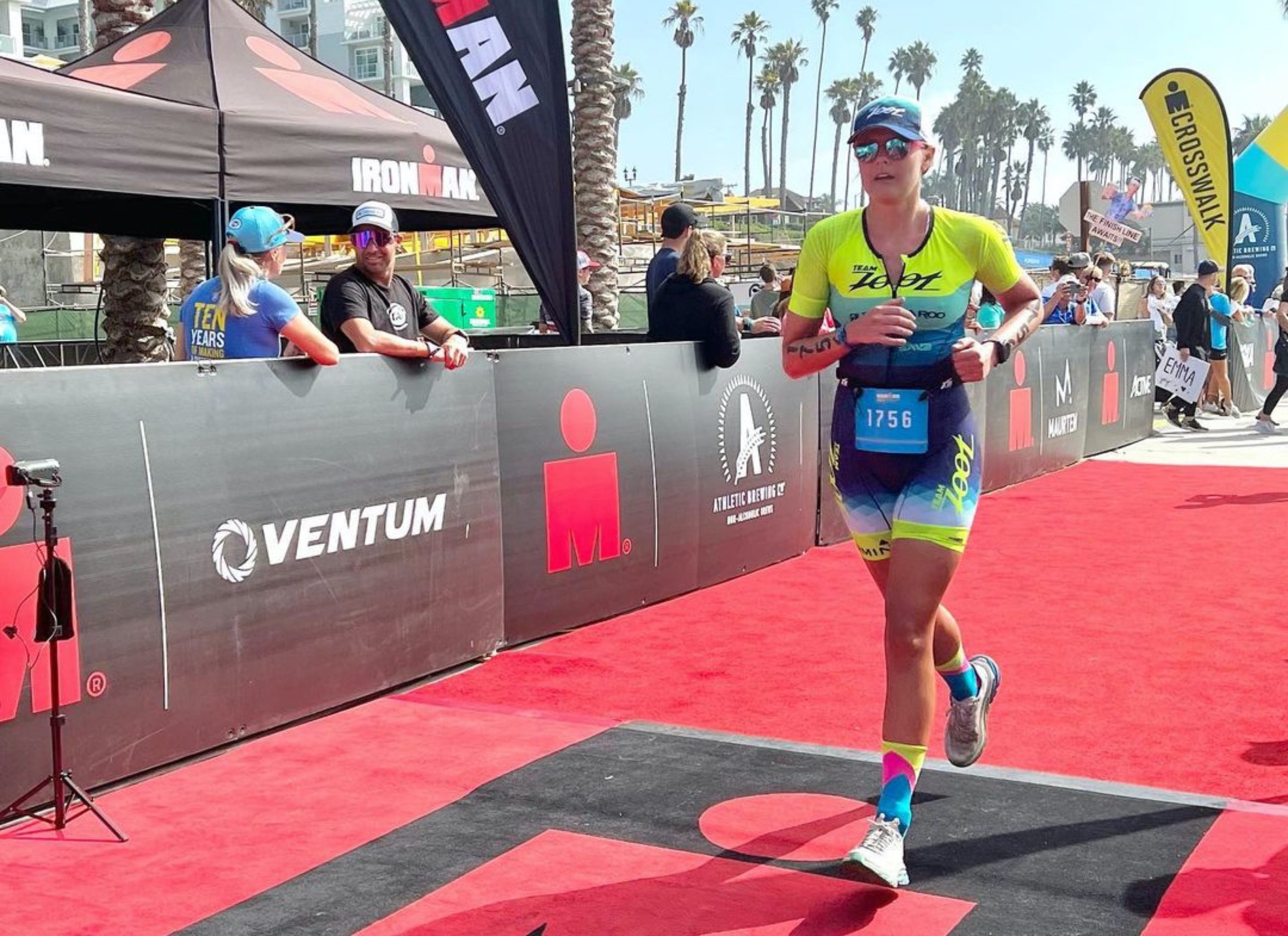Nothing Can Stop A Mission Driven Mindset
Triathlon Age Grouper Carolyn Carter shares how her mindset superpower is what gets her across finish lines and onto podiums.

Ironman triathlon is one of the world’s most challenging endurance races, it takes a certain mentality to be a contender in this race. In addition to a strong body, you must have the resilience to push yourself past your conceivable limits.
In order to understand what it takes to be a great triathlete, it’s important to look towards successful athletes such as Carolyn Carter. Though she struggled when starting out, she’s developed a resilient mentality that’s helped her make a name for herself as an athlete.
If you want to find out how to adopt Carolyn Carter’s mentality in order to succeed in your first Ironman Triathlon, read on and we’ll tell you everything that you need to know.
Motivation From an Early Age
Carolyn Carter had a goal-driven mindset from a young age. She started her competitive swimming career at the age of 5. It was during this time that she learned the value of setting goals and committing to achieving them.
She shared that “If I didn’t have goals to work towards, I would have no purpose in life.”
But according to Carter, not only is it important to set goals. It’s also important to set them for the right reasons. “For me, it’s about having a goal. While I do enjoy being competitive against others, I mainly enjoy being competitive with myself,” she said.
This mission-driven mindset is her superpower when it comes to crushing her objectives on and off the racecourse. This is an especially important mindset for those who compete in longer races such as the 70.3 triathlon or full ironman distance.
Be Ready to Overcome Obstacles
It’s much easier to accomplish your goals when things go according to plan. But unfortunately, life has a way of throwing curveballs when we least expect them. This is why mental toughness is so important.
Carolyn’s first Ironman, Louisville 2018 is a perfect example. She says that “The weather had been beautiful all week leading up to the race. On race day, the weather turned. It was 45 degrees and raining. People were pulling over left and right hypothermic.”
Being mission-driven means you are willing to endure whatever is thrown at you to accomplish your goal. This is not something you find during the race.
You must build it up and have it with you from the starting line. No matter what triathlon distances you’ll be competing at, this is a mentality that will help you to succeed.
When Carolyn’s grandfather asked her after the race, “When did you know you were going to finish?”; without hesitation, Carter responded that she knew “The second I signed up.”
This drive to accomplish your goals is not isolated to just sports. This is a skill that can benefit all aspects of our lives.
Carolyn finds that this discipline presents itself in many aspects of her life. “Being a goal-oriented person, I have things I want to achieve in other areas, whether it’s work, family, or personal life.”
Embrace the Unknown and Be Ready to Shift
While you can’t predict the future, you can plan for it. As a self-proclaimed “planner,” Carolyn suggested that triathlon competitors “Make sure to monitor the weather and have the appropriate apparel for all conditions. For cold, arm warmers, a vest and rain jacket is key to keeping the moisture out and regulating your temperature.”
Even if you’re competing in shorter triathlons such as a Half Ironman Triathlon or a Sprint Triathlon, this is good advice to take heed of. Many experienced triathlon competitors say that one of their greatest challenges has been learning how to prepare for unpredictable weather conditions.
There are other areas of the sport you can plan for as well, says Carolyn Carter. She suggests that racers who are training for an Ironman triathlon to “Know how to change a flat, always bring extra nutrition, always have extra socks in transition.” These seemingly trivial things can make all the difference on race day.
Surround Yourself With Those Who Inspire You
As a swimmer turned runner, going into triathlon was a fairly seamless transition. But something that caught her by surprise was her newfound love of cycling.
She said that “I love cycling. Since I work from home, I’m stuck in my apartment all day. Riding is my social hour to see people and friends.”
She added that, during the season, it’s not uncommon for Carolyn to average 200 miles a week.
She credits much of her bicycling success to the positive influences from other groups and teams of stronger riders. Many other successful triathletes such as Angie Jackson have shared similar things.
In order to connect with superior performers, Carolyn Carter went as far as joining a cycling race team where she competed in both criterium (crit) and road races.
“Cycling racing is almost the polar opposite of triathlon racing,” Carter shared. She pointed out that crit races, in particular, are known for having a tight course. People are usually bunched together and there is a lot of pressure to keep up with the leader of the group.
This was much different than she was used to. “In triathlon,” she said, “You can just put your head down and push steady watts.”
Get Ready to Compete
If you’ve never competed in a triathlon before, the best way to get started is by getting in the right mental state. As a successful triathlete who has overcome many obstacles, Carolyn Carter has shown that nothing can stop a mission driven mindset.

